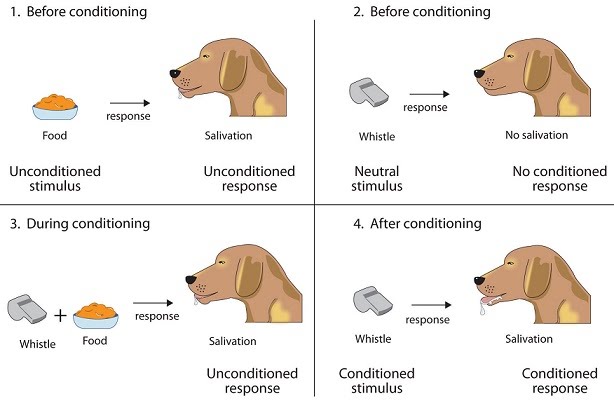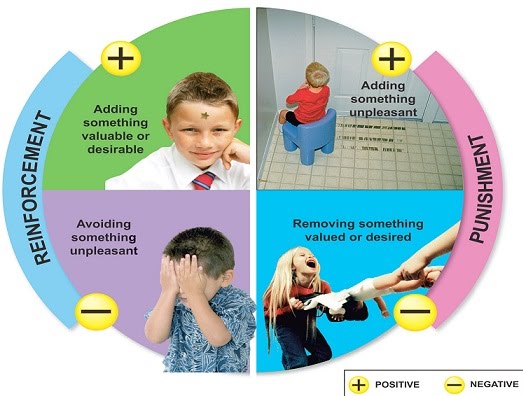Classical conditioning
Operant conditioning
Classical conditioning
Classical conditioning is the scenario of the dog salivating over food, then associating a bell ringing with the food and salivating thereafter at the sound of the bell only.

It relies on strong biological responses to unconditioned stimuli (US) in order to then pair the US with any neutral stimulus and, over a certain period of time and number of repeated instances, result in a conditioned response from a conditioned stimulus.
Operant conditioning
Operant conditioning involves the change in magnitude of behaviour base on its consequences. Consequences can be classified into positive or negative. Positive consequences involve the addition of either a reward or a punishment, while negative consequences involved the removal of either a reward or a punishment.
Therefore, reinforcement and punishment can be positive or negative. A positive reinforcement is a reward. A negative reinforcement is taking away of a punishment.
A positive punishment is giving a punishment. A negative punishment is taking away a reward.

Reinforcement (whether positive or negative), as the name suggests, results in an increase of the behaviour it follows. Punishment (whether positive or negative) results in a decrease of the behaviour it follows.
The intensity of reinforcements and punishments of a certain behaviour over time give the overall outcome of how often the behaviour will take place. A previously reinforced behaviour that no longer is reinforced will become less likely in a scenario called extinction.
Learning in operant conditioning depends on a number of factors such as contingency, immediacy and…
